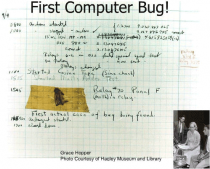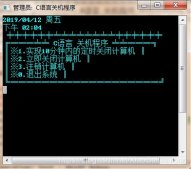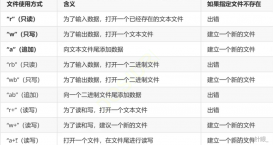为什么需要互斥量
在多任务操作系统中,同时运行的多个任务可能都需要使用同一种资源。这个过程有点类似于,公司部门里,我在使用着打印机打印东西的同时(还没有打印完),别人刚好也在此刻使用打印机打印东西,如果不做任何处理的话,打印出来的东西肯定是错乱的。
|
1
2
3
4
5
6
7
8
9
10
11
12
13
14
15
16
17
18
19
20
21
22
23
24
25
26
27
28
29
30
31
32
33
34
35
36
37
38
39
40
41
42
43
44
45
46
47
48
49
50
51
52
|
#define _crt_secure_no_warnings#include <iostream>#include <string>#include <chrono>#include <thread>// 打印机void printer(const char *str){ while(*str != '\0') { std::cout << *str; str++; std::this_thread::sleep_for(std::chrono::milliseconds(1000)); } std::cout << std::endl;}// 线程一void func1(){ const char *str = "hello"; printer(str);}// 线程二void func2(){ const char *str = "world"; printer(str);}void mytest(){ std::thread t1(func1); std::thread t2(func2); t1.join(); t2.join(); return;}int main(){ mytest(); system("pause"); return 0;} |
独占互斥量std::mutex
互斥量的基本接口很相似,一般用法是通过lock()方法来阻塞线程,直到获得互斥量的所有权为止。在线程获得互斥量并完成任务之后,就必须使用unlock()来解除对互斥量的占用,lock()和unlock()必须成对出现。try_lock()尝试锁定互斥量,如果成功则返回true, 如果失败则返回false,它是非阻塞的。
|
1
2
3
4
5
6
7
8
9
10
11
12
13
14
15
16
17
18
19
20
21
22
23
24
25
26
27
28
29
30
31
32
33
34
35
36
37
38
39
40
41
42
43
44
45
46
47
48
49
50
51
52
53
54
55
56
57
|
#define _crt_secure_no_warnings#include <iostream>#include <string>#include <chrono>#include <thread>#include <mutex>std::mutex g_lock; //全局互斥锁对象,#include <mutex>// 打印机void printer(const char *str){ g_lock.lock(); //上锁 while(*str != '\0') { std::cout << *str; str++; std::this_thread::sleep_for(std::chrono::milliseconds(1000)); } std::cout << std::endl; g_lock.unlock(); // 解锁}// 线程一void func1(){ const char *str = "hello"; printer(str);}// 线程二void func2(){ const char *str = "world"; printer(str);}void mytest(){ std::thread t1(func1); std::thread t2(func2); t1.join(); t2.join(); return;}int main(){ mytest(); system("pause"); return 0;} |
使用std::lock_guard可以简化lock/unlock的写法,同时也更安全,因为lock_guard在构造时会自动锁定互斥量,而在退出作用域后进行析构时就会自动解锁,从而避免忘了unlock操作。
|
1
2
3
4
5
6
7
8
9
10
11
12
13
14
15
16
17
18
19
20
21
22
23
24
25
26
27
28
29
30
31
32
33
34
35
36
37
38
39
40
41
42
43
44
45
46
47
48
49
50
51
52
53
54
55
56
57
|
#define _crt_secure_no_warnings#include <iostream>#include <string>#include <chrono>#include <thread>#include <mutex>std::mutex g_lock; //全局互斥锁对象,#include <mutex>// 打印机void printer(const char *str){ std::lock_guard<std::mutex> locker(g_lock); // lock_guard 上锁 while(*str != '\0') { std::cout << *str; str++; std::this_thread::sleep_for(std::chrono::milliseconds(1000)); } std::cout << std::endl; // 即将推出作用域 lock_guard 会自动解锁}// 线程一void func1(){ const char *str = "hello"; printer(str);}// 线程二void func2(){ const char *str = "world"; printer(str);}void mytest(){ std::thread t1(func1); std::thread t2(func2); t1.join(); t2.join(); return;}int main(){ mytest(); system("pause"); return 0;} |
原子操作
所谓的原子操作,取的就是“原子是最小的、不可分割的最小个体”的意义,它表示在多个线程访问同一个全局资源的时候,能够确保所有其他的线程都不在同一时间内访问相同的资源。也就是他确保了在同一时刻只有唯一的线程对这个资源进行访问。这有点类似互斥对象对共享资源的访问的保护,但是原子操作更加接近底层,因而效率更高。
|
1
2
3
4
5
6
7
8
9
10
11
12
13
14
15
16
17
18
19
20
21
22
23
24
25
26
27
28
29
30
31
32
33
34
35
36
37
38
39
40
41
42
43
44
45
46
47
48
|
#define _crt_secure_no_warnings#include <iostream>#include <string>#include <chrono>#include <thread>//全局的结果数据long total = 0;//点击函数void func(){ for(int i = 0; i < 1000000; ++i) { // 对全局数据进行无锁访问 total += 1; }}void mytest(){ clock_t start = clock(); // 计时开始 //线程 std::thread t1(func); std::thread t2(func); t1.join(); t2.join(); clock_t end = clock(); // 计时结束 std::cout << "total = " << total << std::endl; std::cout << "time = " << end-start << " ms" << std::endl; return;}int main(){ mytest(); system("pause"); return 0;} |
由于线程间对数据的竞争而导致每次运行的结果都不一样。因此,为了防止数据竞争问题,我们需要对total进行原子操作。



通过互斥锁进行原子操作:
|
1
2
3
4
5
6
7
8
9
10
11
12
13
14
15
16
17
18
19
20
21
22
23
24
25
26
27
28
29
30
31
32
33
34
35
36
37
38
39
40
41
42
43
44
45
46
47
48
49
50
51
52
|
#define _crt_secure_no_warnings#include <iostream>#include <string>#include <chrono>#include <thread>#include <mutex>std::mutex g_lock;//全局的结果数据long total = 0;//点击函数void func(){ for(int i = 0; i < 1000000; ++i) { g_lock.lock(); // 加锁 total += 1; g_lock.unlock(); // 加锁 }}void mytest(){ clock_t start = clock(); // 计时开始 //线程 std::thread t1(func); std::thread t2(func); t1.join(); t2.join(); clock_t end = clock(); // 计时结束 std::cout << "total = " << total << std::endl; std::cout << "time = " << end-start << " ms" << std::endl; return;}int main(){ mytest(); system("pause"); return 0;} |
每次运行的结果都一样,只是耗时长点。


在新标准c++11,引入了原子操作的概念。
如果我们在多个线程中对这些类型的共享资源进行操作,编译器将保证这些操作都是原子性的,也就是说,确保任意时刻只有一个线程对这个资源进行访问,编译器将保证多个线程访问这个共享资源的正确性。从而避免了锁的使用,提高了效率。
|
1
2
3
4
5
6
7
8
9
10
11
12
13
14
15
16
17
18
19
20
21
22
23
24
25
26
27
28
29
30
31
32
33
34
35
36
37
38
39
40
41
42
43
44
45
46
47
48
49
|
#define _crt_secure_no_warnings#include <iostream>#include <string>#include <chrono>#include <thread>#include <atomic>//原子数据类型std::atomic<long> total(0); //需要头文件 #include <atomic>//点击函数void func(){ for(int i = 0; i < 1000000; ++i) { // total += 1; }}void mytest(){ clock_t start = clock(); // 计时开始 //线程 std::thread t1(func); std::thread t2(func); t1.join(); t2.join(); clock_t end = clock(); // 计时结束 std::cout << "total = " << total << std::endl; std::cout << "time = " << end-start << " ms" << std::endl; return;}int main(){ mytest(); system("pause"); return 0;} |
原子操作的实现跟普通数据类型类似,但是它能够在保证结果正确的前提下,提供比mutex等锁机制更好的性能。
以上就是浅谈c++11线程的互斥量的详细内容,更多关于c++11线程的互斥量的资料请关注服务器之家其它相关文章!
原文链接:https://www.cnblogs.com/lsgxeva/p/7789081.html
















